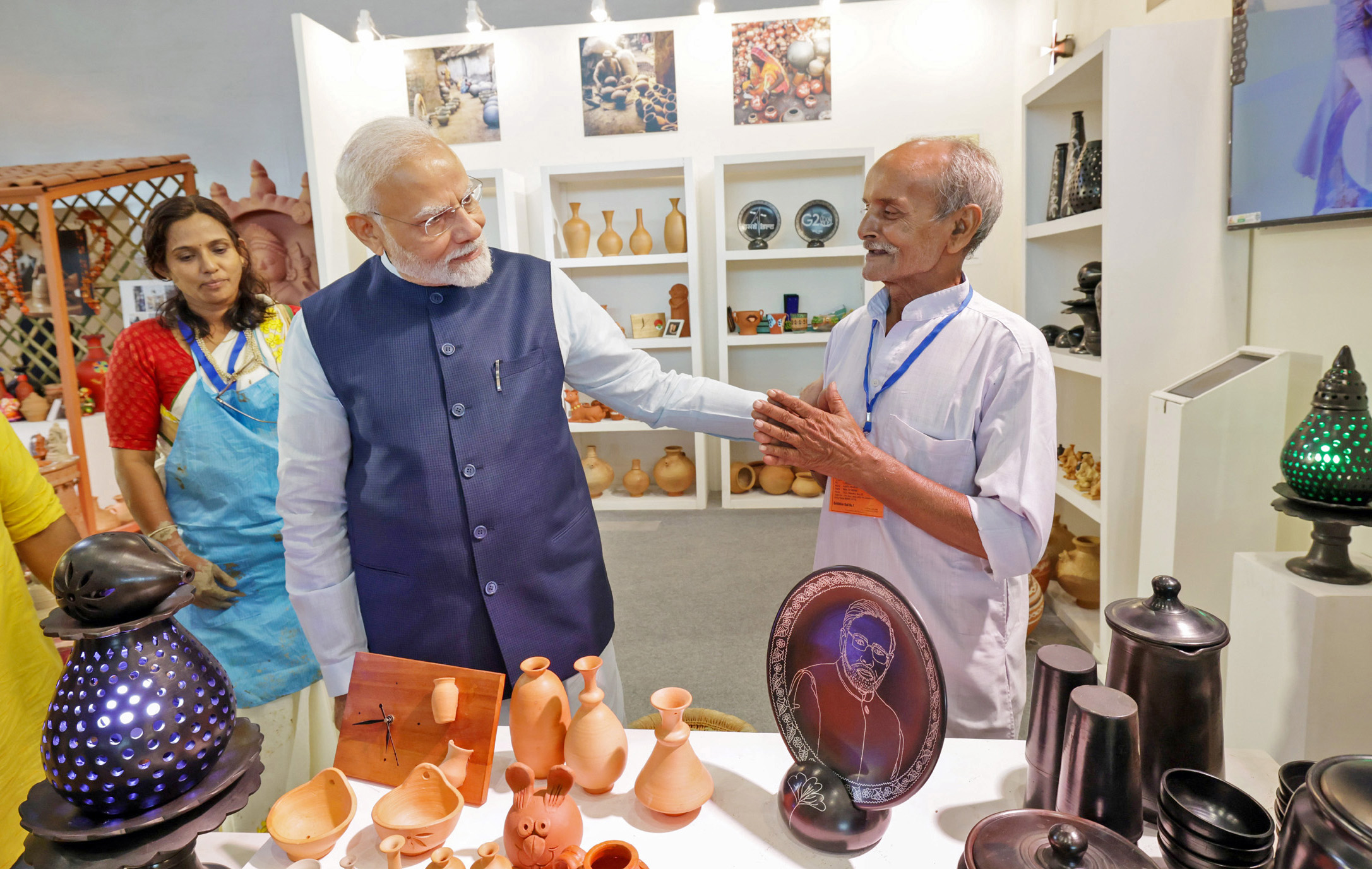Over the last two years, the PM Vishwakarma Scheme has begun transforming the lives of traditional artisans and craftsmen by providing them with recognition, training, tools, credit, and market access. Launched on 17 September 2023, with a financial outlay of ₹13,000 crores for FY 2023-24 to FY 2027-28, the scheme is implemented jointly by the Ministry of Micro, Small & Medium Enterprises (MoMSME), the Ministry of Skill Development & Entrepreneurship (MSDE), and the Department of Financial Services under the Ministry of Finance. The goal is to uplift people working in traditional trades who use bare hands or simple tools and to bring dignity, stability, and growth to their work.
As of August 31, 2025, approximately 30 lakh artisans and craftspeople have registered under Vishwakarma. Among them, about 26 lakh have completed skill verification, and approximately 86% of those went on to finish basic training. Raajmistri (Mason) is the most registered trade. Artisans like Prateek Prakash Rao Jamadkar in Khanapur, Amravati, were earlier without identity or modern tools; under the scheme, he got a loan of ₹1 lakh, used it to buy tools, and gained skills and recognition, improving both his capacity and morale.
The scheme provides a set of benefits designed to address multiple constraints simultaneously. Artisans receive a PM Vishwakarma certificate and ID card for recognition. They also get daily stipends of ₹500 during training periods. There is a toolkit incentive: an e-voucher of up to ₹15,000 to procure better tools. For business expansion, collateral-free Enterprise Development Loans are available, with concessional interest and in two tranches. Marketing support, incentives for digital transactions, and brand or market linkages are also included.
District Project Management Units (DPMUs) have been appointed in nearly every district (497 units as of July 2025) to raise awareness, manage the training schedules, coordinate stakeholders, and ensure compliance with training guidelines. The scheme is also reaching different states, covering urban and rural trades, including masons, carpenters, potters, washers, cobblers, and tailors, among others.
The expected benefits are multiple: craftsmen who previously worked without identity or recognition can now receive social status and validation for their work; skills training and modern tools are likely to increase productivity, reduce delays, and improve the quality of outputs; accessible credit can reduce dependence on informal/high-interest lending; and market linkages and digital transactions can open up new buyer markets and stability of income. By combining recognition, training, credit, and modern tools, the scheme aims to convert traditional skills into sustainable livelihoods.
There are early signs of scale: more than 23 lakh e-vouchers issued for toolkits and over 4.7 lakh loans approved, valued at tens of thousands of crores. These numbers suggest the scheme is not limited to pilot phases but is operating broadly. The high registration and verification rates show both demand and institutional capacity are aligning.
Looking ahead, the success of the scheme will depend on ensuring that artisans not just register but complete advanced training, that the loans are disbursed efficiently, and that access to markets remains effective. Ensuring quality control of tools, transparency in credit support, and ensuring that remote or marginalized artisans are not left out will be essential for realizing the full potential. If implemented well, PM Vishwakarma could serve as a model for combining heritage crafts with modern entrepreneurship.














